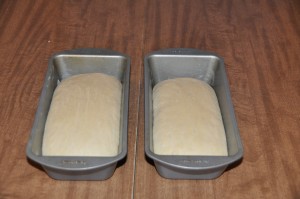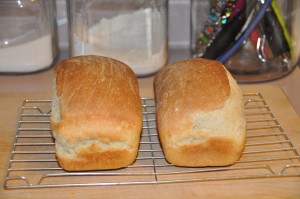“You may try the same recipe [for Salt-Rising Bread] without success three or four times and find that it works the fifth time. Or you may get a loaf that is halfway good. If it works, fine; if it doesn’t, forget it. I am including it in this collection because it is a worthy recipe, but I do so with a warning that you may be disappointed.”
-James Beard, Beard on Bread
Because I am caught up in the stress-inducing situation that is home renovations while switching jobs, I am a week behind posting this. However, I have been working on my sourdough starter for the Brooks Bakes Bread Grand Finale tomorrow.
Salt-Rising Bread turned out to be one of my biggest failures of my Brooks Bakes Bread project. The idea behind salt rising bread is that you cultivate wild yeast to make your bread rise. However, yeast turns out to be wily for a one-celled organism. To sum it up briefly, because I am incredibly tired:
1) I made a starter using a potato, and let it sit in a warm water bath in my slow cooker for nearly 24 hours. The temperature was a steady 100 degrees.
2) Nevertheless, my starter failed to foam at all. Instead of giving up, I moved to Plan B:
Plan B: Add yeast to your “yeast free” bread to ensure that it rises.
3) I ended up with a decent loaf of bread, although it wasn’t Salt-Rising Bread. It had a nice even crumb and a slightly cheesy flavor from the starter.


